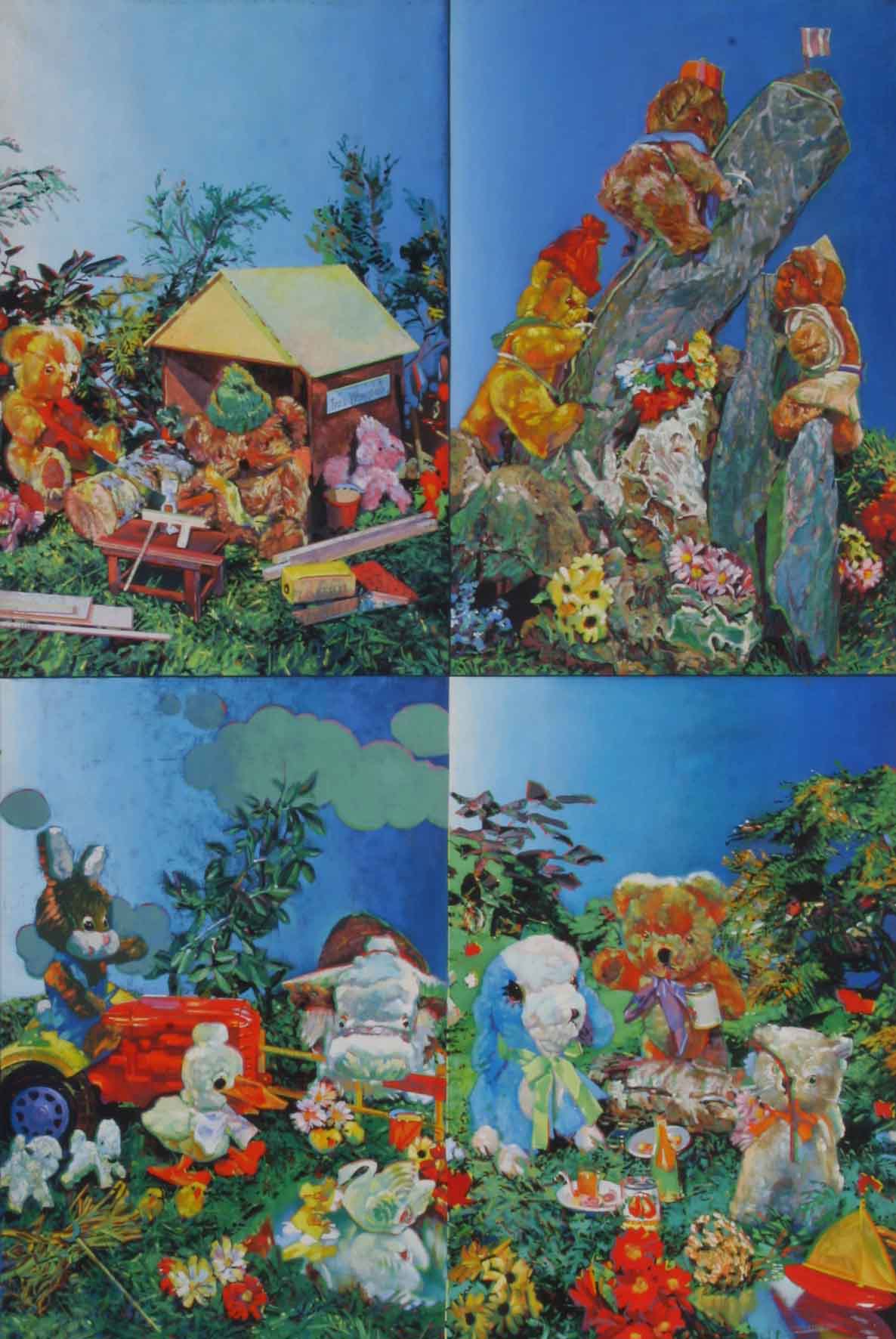At the beginning of the 1970s, Ákos Birkás was experimenting with critical, grotesque, “bad painting,” targeting purposefully banal subjects. The theme of his work in the collection is four postcards available at the time in Hungary from English import.
On the pictures one sees plush animal toys in everyday situations (sawing, mountain climbing, gathering in a garden, picnicking). The painter juxtaposed the cards in two rows, thus creating a “picture in picture” situation, distancing the viewer from the “cuteness” of the animal toys and making it possible to compare visual analysis of the image promoted for children’s use.
Despite its detached mode of painting, the intention behind this composition is different than the Western photorealist approach of the time (like the works of Franz Gertsch or Chuck Close). In opposition both to learned approaches and official ideology, the painter wanted to map “aesthetic reality,” i.e. to show and analyse the real situation of visuality, and thus make it possible to accept it.

